#taniwha
Text
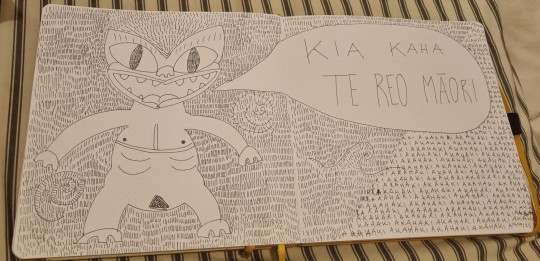


Ko tāku toi tēnei mō te wiki o te reo
Māori.
Ko uaua tāku reo. He taonga reo. E rua, e rua. Ki ōku tūpuna, kia whakarongo
au ki a koutou. Ka tarai au.
Kia kaha Te Reo Māori ❤️🖤
---
Tāku kōrero i te reo Pākehā:
This is my art for Māori Language week.
My language is hard. It is a treasure. These both are true.
To my ancestors, I will/am listening to you. I will try.
Be strong, Māori language.
#te reo Māori#Māori#te wiki o te reo māori#new zealand#taniwha#aotearoa#mahuru māori#māori tag#my art
54 notes
·
View notes
Text



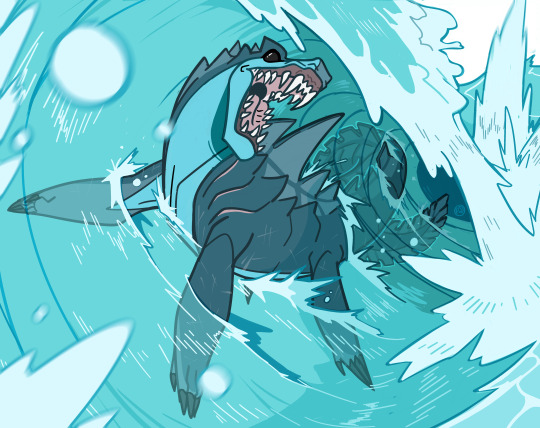

December Commissions 2023:
Chimera
Gungnir
Quetzalcoatl
Taniwha
Thunderbird
#digital art#fantasy#monster#monster art#creature design#creature art#commissions#commission#chimera#gungnir#quetzalcoatl#thunderbird#taniwha
37 notes
·
View notes
Text
youtube
Watch the American Climate Leadership Awards 2024 now: https://youtu.be/bWiW4Rp8vF0?feature=shared
The American Climate Leadership Awards 2024 broadcast recording is now available on ecoAmerica's YouTube channel for viewers to be inspired by active climate leaders. Watch to find out which finalist received the $50,000 grand prize! Hosted by Vanessa Hauc and featuring Bill McKibben and Katharine Hayhoe!
#ACLA24#ACLA24Leaders#youtube#youtube video#climate leaders#climate solutions#climate action#climate and environment#climate#climate change#climate and health#climate blog#climate justice#climate news#weather and climate#environmental news#environment#environmental awareness#environment and health#environmental#environmental issues#environmental justice#environment protection#environmental health#Youtube
6K notes
·
View notes
Text

A Taniwha
39 notes
·
View notes
Text
Ioun Kineticist (Kineticist Archetype)
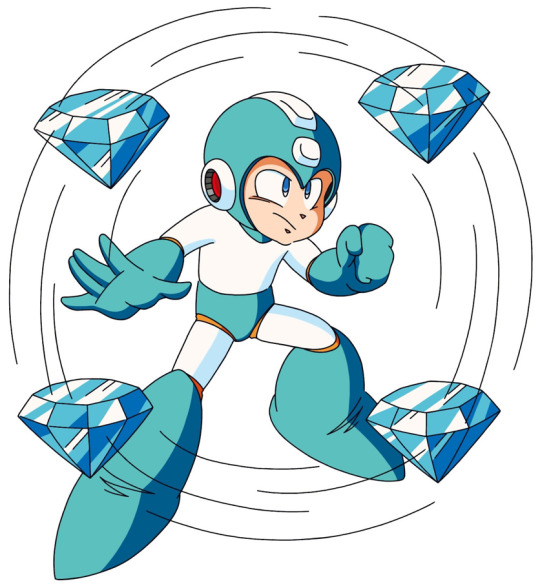
(art (presumed) by Yoshitaka Hatakeyama for Mega Man 9)
Anyone remember that scene where Magneto busted himself out of a plastic prison in X2: X-Men United with a trio of iron spheres? Because that scene lives rent-free in my head.
Perhaps one of the classic sub-tropes of telekinetic powers is the character that carries around a handful of special objects that they like to move around almost exclusively? These objects typically orbit the character when in use and simultaneously serve as a form of defense, but also can be launched out as projectiles before being pulled back into orbit. Well, that’s more or less what we’re dealing with today, but it gets a bit more interesting since the object in question is the classic orbiting magic item, the ioun stone! (or, well, Aeon stone now if we’re going with the updated lore of Starfinder and Pathfinder 2E).
Ioun/Aeon stones were, in the Lost Omens setting, an invention of the Azlanti, who discovered all sorts of wondrous uses for these magically-charged gemstones, which could provide passive powers, but also more advanced resonant powers as well if plugged into the right device, to say nothing of how they tend to power all sorts of strange wonders.
It only makes sense that there would be those that wish to study them deeply, and in the case of those with telekinetic powers, utilize them in their arts. Simply put, these kineticists learn how to unlock the true power of these stones while also using them as weapons and defense.
It's a pity we probably won't see any version of this archetype return since the 2e version of the kineticist lacks the aether element.
As suggested, these kineticists by necessity are linked to the element of aether. However, their focus on manipulating ioun stones means that they lack some of the more force-based talent choices, instead focusing on more crystalline components, allowing them to spin their stones in a deadly whirlwind, gather them up into an explosive ball projectile, grow jagged crystals from their bodies, or even infuse their stone with properties to pierce the resistances of certain foes.
They also start with a trio of dull gray stones bonded to them. Able to do little more than hover around their owner, these stone nevertheless make good projectiles. However, these mystics can replace these dull gray stones with functional stone by bonding with them, and eventually have more than three stones bonded in this way, though they still can have more non-bonded stones orbiting them and providing benefits.
Their basic kinesis allows them to stow or retrieve their stones from storage en masse with ease, as well as channel their arcane power to enact simple magical effects.
Rather than build up a buffer in their own body, these kineticists instead store the reserved energy within their stones and spend it when needed. However, they can also choose to sacrifice the stone invested with their energy to gain even more fuel for their more powerful talents at the cost of burning out the stone, rendering it an inert dull gray stone. The more valuable the stone, the greater the energy.
As they accept burn, these kineticists also begin to resonate with their stones rather than grow in personal power. The greater the burn, the more of the resonant abilities of their stones they can activate and draw upon at once. What’s more, for stone that normally provide a bolstering to body and mind, they can forgo the normal resonant ability in favor of getting a bigger boost from them, though only one at once.
Finally, it’s worth noting that these kineticists do not learn to strike foes with pure force when they learn deeper secrets of the Aether. Instead, they learn the “Azlanti” composite blast, an improved version of their telekinetic blast that draws upon the power and knowledge of the Azlanti civilization to increase the speed and power of their projectile stones.
With the nature of this archetype, it’s clear that it is meant to be supplemented with most of your character’s wealth being focused on buying more ioun stones. The tricky part about that being that ioun stones are always more expensive than most items that provide a similar bonus since they don’t have an item slot or upper limit on the number of stone you can have orbiting you (though obviously many have effects that don’t stack or provide additional benefit. Also consider what stones you want to be bonded with, since that will determine what resonant powers you have access to later in the day. As for the build itself, I recommend one focused on equal parts blasting offense and defense.
While the ioun/aeon stones are heavily connected to their creators, the Azlanti in Pathfinder’s core setting, in other settings the lore may be very different, but no less worthy of exploration. Perhaps the stones are naturally occurring but need to be “crafted” to bring out their magic, or they might be magic crystallized in specific processes. No matter their origins, however, researching these stones can prove a good basis for any hero, and make for a kineticist that is much more intellectual about their powers even as they continue to channel them through their body.
The party is chasing the villain downriver, but it feels like they’re not making any progress, that is until they are met by a taniwha, a magical serpent that tastes magic. The poor creature is wary due to its injuries, but it did bite the man who wounded it, the man surrounded by floating stone, their quarry.
They say that the mountain of Pojun is riddled with caves that are filled with the God’s Blood crystals from which aeon stones can be made, but the surrounding jungle prevents it’s exploitation by those who would mine them, and the grippli guardians who wield the stones in a glittering whirlwind of death prevent the jungle from being harmed.
It is said that the wizard Ioun invented his namesake stones, but he was inspired by a magical crystal found in some cavern lost to time. This gem, the True Heartstone, was said to grant great power to the one who proved worthy of wielding it. Many who study the stones consider it a myth, but the dream of finding it lives on.
18 notes
·
View notes
Text
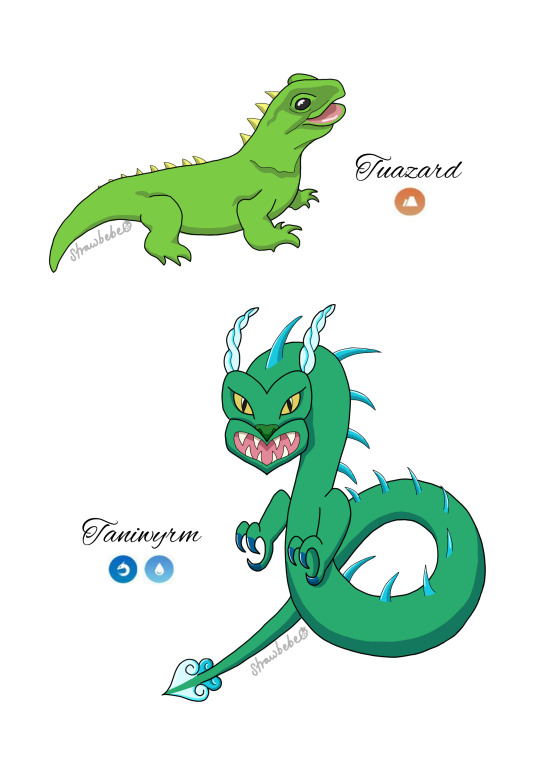
Pokemon Challenge 2024! Tuazard family.
Find the rest of the Te'Roa set in my master post!
By the way, I am just doing this project for fun/while I work on my portfolio. If you would like to support me so I can keep making cool art, consider buying me a coffee! It would make my day.
#art#my art#pokemon#pokemon challenge 2024#new zealand#pokemon art#fakemon#tuatara#taniwha#ground type#dragon type#water type
12 notes
·
View notes
Text

Full size if you love me~
Time for the march edition of my monthly detailed background challenge! This month was @Rabbitdoesarts's turn to pick and thusly, I present The Heart of Naelus from the Naelus, the Isle of Mist roleplay! I am honestly really proud of how this came out! If your character was featured and you want the high quality version, poke me on discord.
Speaking of people's characters!
Mine - Beech, Mochi, Quicksnap
@tigerwriter Taakeyrr, Xsabaskis, Soaitsae, Yellowtail, Driftstone
@rabbitdoesarts Kopi, Tash
@affableanthropologist Te Tai
Rielcz's Rui Tanma
Liou's Renpi
#Naelus#OC Beech#OC Quicksnap#OC Mochi#dinosaur#dilophosaurus#deinonychus#kaprosuchus#thylacine#longma#rabbit#taniwha
5 notes
·
View notes
Text

"Awarua o Porirua Taniwha Learns to Fly" by Alistair McDonald.
#alistair mcdonald#awarua#awarua o porirua#taniwha#maori folklore#maori mythology#folklore#mythology#fantasy art
6 notes
·
View notes
Text

I miss the beach. Here is a picture of a Taniwha (monster) from my last walk on the beach before I got caught by a real Taniwha.
#monster#taniwha#learning Te Reo is a lifelong journey#beach#beach vibes#COVID isolation#no beach walks#it really does look like a Taniwha
28 notes
·
View notes
Text

For @i-appel-du-vide — I couldn’t find many good pictures of taniwha but I did my best, hope this is ok!!

4 notes
·
View notes
Text
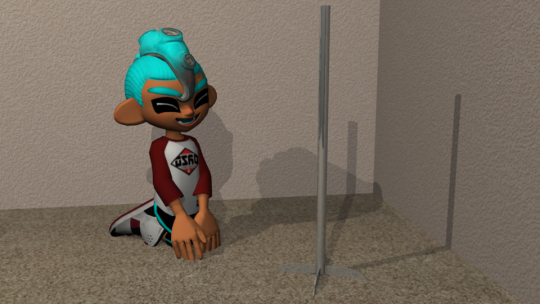
'tis that time of year. Merry Squidmas, Happy Hanukkah, and to the Octolings in the audience, Qalea Oktiva-satu (enjoyable Octivus). If you don't celebrate anything, I hope the weather's nice where you are.
8 notes
·
View notes
Text
Taniwha
In Māori mythology, taniwha (Māori pronunciation: [ˈtanifa]) are large supernatural beings that live in deep pools in rivers, dark caves, or in the sea, especially in places with dangerous currents or deceptive breakers (giant waves). They may be considered highly respected kaitiaki (protective guardians) of people and places, or in some traditions as dangerous, predatory beings, which for example would kidnap women to have as wives.
At sea, a taniwha often appears as a whale or as quite a large shark such as southern right whale or whale shark; compare the Māori name for the Great white shark: mangō-taniwha. In inland waters, they may still be of whale-like dimensions, but look more like a gecko or a tuatara, having a row of spines along the back. Other taniwha appear as a floating log, which behaves in a disconcerting way (Orbell 1998:149-150, Reed 1963:297). Some can tunnel through the earth, uprooting trees in the process. Legends credit certain taniwha with creating harbours by carving out a channel to the ocean. Wellington's harbour, Te Whanganui-a-Tara, was reputedly carved out by two taniwha. The petrified remains of one of them turned into a hill overlooking the city. Other taniwha allegedly caused landslides beside lakes or rivers.
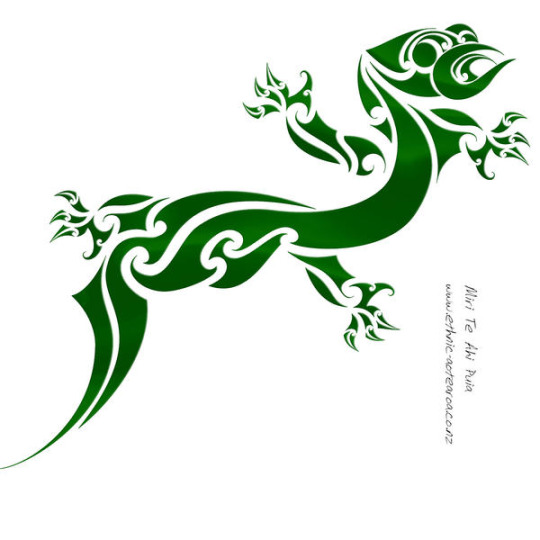
Pic by DragonAotearoa on DeviantArt
Taniwha can either be male or female. The taniwha Araiteuru is said to have arrived in New Zealand with the early voyaging canoes and her eleven sons are credited with creating the various branches of the Hokianga Harbour (Orbell 1995:184-185).
There has been some speculation based on several marine sightings and on purported habitat & physical representations that the Taniwha myth may be based on periodic populations of Saltwater Crocodile which rarely end up crossing the strait from Australia. Northern New Zealand presently appears to be just outside the temperature range where a population can sustain itself indefinitely, dying out during unusually cold winters.
Most taniwha have associations with tribal groups; each group may have a taniwha of its own. The taniwha Ureia, depicted on this page, was associated as a guardian with the Māori people of the Hauraki district. Many well-known taniwha arrived from Hawaiki, often as guardians of a particular ancestral canoe. Once arrived in Aotearoa, they took on a protective role over the descendants of the crew of the canoe they had accompanied. The origins of many other taniwha are unknown.
When accorded appropriate respect, taniwha usually acted well towards their people. Taniwha acted as guardians by warning of the approach of enemies, communicating the information via a priest who was a medium; sometimes the taniwha saved people from drowning. Because they lived in dangerous or dark and gloomy places, the people were careful to placate the taniwha with appropriate offerings if they needed to be in the vicinity or to pass by its lair. These offerings were often of a green twig, accompanied by a fitting incantation. In harvest time, the first kūmara (sweet potato) or the first taro was often presented to the taniwha.
Arising from the role of taniwha as tribal guardians, the word can also refer in a complimentary way to chiefs. The famous saying of the Tainui people of the Waikato district plays on this double meaning: Waikato taniwha rau (Waikato of a hundred chiefs) (Mead & Groves 2001:421).
Witi Ihimaera, author of The Whale Rider, says that he has a female kaitiaki (guardian) taniwha named Hine Te Ariki who lives in the Waipāoa River.
In their role as guardians, taniwha were vigilant to ensure that the people respected the restrictions imposed by tapu. They made certain that any violations of tapu were punished. Taniwha were especially dangerous to people from other tribes. There are many legends of battles with taniwha, both on land and at sea. Often these conflicts took place soon after the settlement of New Zealand, generally after a taniwha had attacked and eaten a person from a tribe that it had no connection with. Always, the humans manage to outwit and defeat the taniwha. Many of these taniwha are described as beings of lizard-like form, and some of the stories say the huge beasts were cut up and eaten by the slayers. When Hotu-puku, a taniwha of the Rotorua district, was killed, his stomach was cut open to reveal a number of bodies of men, women, and children, whole and still undigested, as well as various body parts. The taniwha had swallowed all that his victims had been carrying, and his stomach also contained weapons of various kinds, darts, greenstone ornaments, shark's teeth, flax clothing, and an assortment of fur and feather cloaks of the highest quality.
Many taniwha were killers but in this particular instance the taniwha Kaiwhare was eventually tamed by Tāmure. Tāmure lived at Hauraki and was understood to have a magical mere/pounamu with powers to defeat taniwha. The Manukau people then called for Tāmure to help kill the taniwha. Tāmure and Kaiwhare wrestled and Tāmure clubbed the taniwha over the head. Although he was unable to kill it, his actions tamed the taniwha. Kaiwhare still lives in the waters but now lives on kōura (crayfish) and wheke (octopus).
Ngārara Huarau is a taniwha known from the myths of several groups of Maori in the northern South Island. In most versions of the story, the monster eats several villagers and captures a young woman whom he keeps in a cave by the sea. Ngārara Huarau is eventually enticed to come to the local village for a feast, where he is ambushed and killed by the villagers. In each version of the story, upon his death the monster's tail detaches itself and is thrown far away into a body of water. In the version of Wainui Bay, and the Tākaka Māori, the tail lands in the pool at the base of Wainui Falls.
Sometimes, a person who had dealings with taniwha during their lifetime might turn into a taniwha after they died. This happened to Te Tahi-o-te-rangi, who had been a medium for the taniwha, and had been rescued at one time by one of the creatures. Tūheita, an early ancestor who drowned, became a taniwha despite the fact that he had no prior dealings with the mythical beasts. Sometimes relationships are formed between humans and taniwha. Hine-kōrako was a female taniwha who married a human man, and Pānia was a woman from the sea who married a human and gave birth to a taniwha (Orbell 1998:150).
In the legend "The Taniwha of Kaipara" three sisters went out to pick berries. One of the sisters was particularly beautiful. The taniwha caused havoc on their walk back and the sisters fled. The taniwha caught the sisters one by one, trying to capture the beautiful one. On succeeding, he then took her back to his cave. Many years passed and the woman bore the taniwha six sons, with three like their father and three fully human. She educated all her sons and in particular taught her human sons the art of war, helping them to fashion and use weapons. The human sons then killed their three taniwha brothers, and eventually their father. They all went back to their homes.
17 notes
·
View notes
Text
Reagan rubbed the designs in the ancient Hai Mataou she always wore. It had been passed down for generations, finally landing with her on her 16th birthday. It used to be white, but despite the care her family provided for it, it had faded to a dull yellow, the symbols and markings long cracked and faded, as taniwha bone did with age. The magic the relic used to contain was faded as well, however much it contained dwindling to a few residue sparks with age. In the center of the spiraling designs were carved letters, reaching out to each other amidst the tendrils of shallow grooves. It really was a beautiful thing. She could barely make out the initials, but it looked to be a crooked E and a curved V. Or maybe it was a U, but something told her it was the former.
She was still fiddling with it when Sep walked in, jumping up to her outcropping of rock and settled next to her. Reagan barely even looked up. Sep had come to visit her everyday since she got here -- at first it was annoying, surely he had other places to be and other things to do than bother her. Somehow his visits grew on her, especially when she realized that he was her only companion -she wouldn't call him a friend just yet- in this dismal cave. Some days, they talked. About Verr, about Veraldwiz, about life. Most days they sat in silence.
Today, Sep was staring at the artifact in her hands. "What is that?"
Reagan didn't look up. She held the little hook up by it's handle, wrapped in worn leather, the longest in a line of repairs. If she focused on it, the glowworms above her disappeared in a blur of blue, framing the carefully crafted artifact. "Hei Mataou. Family heirloom."
"Oh. Who gave it to you?"
"My... mother. Before she died." Sep dipped his head. "I'm sorry." He whispered, falling silent again.
"It's okay." Reagan pulled her legs under her and held out her hook. "Would you like to see it?"
Sep nodded. His hands were warm when Reagan dropped it into his palm.
Reagan watched as Sep held it up to the light, twisting it, gently tracing the carvings. His breath suddenly hitched when he flipped it over and read the initials. Reagan looked at him.
"Where did you find this?"
Reagan shrugged. "It's been in the family for hundreds of years. I guess someone found it when the Island was destroyed and Sintania invaded. I guess it's one of the last Hei Mataou we have from Sintania's reign. At least, that's what my father said."
"Ah. And Sintania was..."
"No clue. Some kind of Polynesian emperor or whatever. I didn't really pay attention in my history classes."
Sep nodded. He froze, then his hand jerked to his neck and he let out a shaky breath as he pulled a necklace out from beneath his shirt. Slowly, he joined the Hei Mataou with his... own fish hook carving. A fish hook with the same markings, same initials, and the complete opposite of Reagan's that fit perfectly in the cracks and grooves and spikes of her Hei Mataou.
Before she knew it, Sep was crying silently. Reagan reached a hand out, but Sep pushed it away. "It's the last thing I have of him...."
"Of... who?" And who exactly was this guy sitting beside her, with an exact copy of the pendant she took everywhere.
"Victor. He died."
"Oh. So the V stands for Victor. What's the E?"
"Ethan." Sep breathed out. Reagan likely wouldn't have heard it if she wasn't listening, hanging on to his every word.
"Ethan. Huh."
"I... I miss him. But he's still here, with me. He's in Ky now."
"Ky?" Reagan echoed.
"He's been with me since he died." Sep said. His voice was quiet, but still echoed in the chamber.
"I'm sorry..."
"It's fine. It happened so long ago..." Sep sighed. "Here's your relic."
Reagan barely caught the Hei Mataou before it could plummet into the rippling water below.
"If... you don't mind me asking. When did he die, exactly?"
Sep froze, halfway to his feet.
"Sep?"
"I... it's best you--" Something clicked. Reagan's breath hitched. "You're Ethan."
Sep let out a choked sob, violently shaking his head. "Please, no--"
Reagan stood up, stepping towards Sep. "When did Victor die?"
"No--"
"Who are you?" Reagan hissed. Sep let out a pained cry, tears slipping down his face.
"I-I have to go--"
"Sep, Ethan, whoever you are, ANSWER ME!"
There was a split second where Reagan watched as Sep's eyes flashed with hatred and fear and pain, before he was lunging at Reagan with a shout of fury. Reagan screamed as she fell backwards into the water. When she finally resurfaced, terrified, furious, and spluttering as she trying not to swallow the water, she realized Sep was gone. Only when she reached the rocky shore, shivering and gasping for breath, did she realize the Hei Mataou was gone.
~
What is a Hei Mataou? A Hei Mataou is greenstone or bone carved in the shape of a fish hook representing strength, prosperity, fertility, good luck and safe travel over water. It's meaning originated from the Maori legend of Maui who once caught a great fish using only a woven line and hook made from the jawbone of his grandmother.
What are taniwha? In Māori mythology, taniwha are large supernatural beings that live in deep pools in rivers, dark caves, or in the sea, especially in places with dangerous currents or deceptive breakers (giant waves)."
Sintania is loosely based on Santana from the Marvel Comics and, aside from being the person who conquered NZ after the Disaster, they have no real relevance to the plot.
Like I said, knee-deep in research. There are some liberties I took for my world-building and mythology-based magic system, but even then, it is based on Maori culture, so if I got anything wrong or portrayed anything in an offensive way, just let me know :)
#my writing#my characters#original character#hei mataou#maori mythology#maori culture#maori#new zealand#colors of Veraldwiz#schizophrenia#schizophrenic character#immortal character#implied/referenced character death#dealing with grief#in a not healthy way#taniwha#halucination#the people found the hei mataou in the ruins of Ititai New Zealan#that's a fictional city btw#hope you enjoy#futuristic fantasy#underground#glow worms#caves#platonic relationships#angst#ghasghdska the feels I have about this book
0 notes
Text
not my best work but on day 8 Taniwha it looked more like an eel
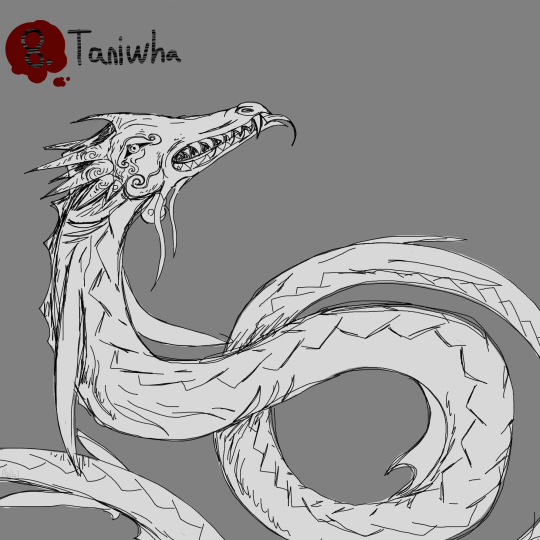
#Taniwha go so hard shut out to them for having a cool ass name#myart#my artwork#digital artwork#halloween#art#inktober#digital art#taniwha#small artist#artists on tumblr#digtial artist#digtial illustration
1 note
·
View note
Text
Am I the only one who’s wanted to attend Hogwarts, this is your chance, a interactive community based in google classroom has recently opened. With the start of year ball approaching now is the perfect time to take the train to maruku, Located near Mount Leisler in the south-west of the Northern Territory of Australia. It is currently the only known Australian wizarding school and has been standing since before the Australian gold rush. after joining our school I suggest you get sorted into one of our five unique houses, Hawkesbury which represent Bravery, Burrunjor house representing Honesty, Thylarctos Plummetus a house of Intellect, Taniwha for the passionate souls and finally Manaia which represents Persistence. I am Cora russel, Taniwha prefect and I cant wait to see what you do.
The classroom code is 73tygq4, we can’t wait to see you shine.
#Hogwarts#Australian hogwarts#Australia#maruku#Taniwha#Manaia#thylarctos Plummetus#Burrunjor#Hawksbury#Magic school#witch#wizard#shapeshifter
0 notes
Text






Day 7 @tolkienofcolourweek: Elwing
Part 25 of toi's indigenous tolkien series
Faceclaim is Moriori and Māori. For Moriori albatross feathers are sacred symbols of peace
[image description
1: white waterfall, text in a circle 'she was born on a night of stars, whose light glittered in the spray of the waterfall of Lanthir Lamath beside her father's house'
2: blue moriori tree symbols, stars, text 'Elwing' and 'Princess of Doriath Lady of Sirion'
3: birds flying, text 'Elwing learned the tongues of birds, who herself had once worn their shape; and they taught her the craft of flight, and her wings were of white and silver-grey.'
4: a young woman with albatross feathers around her, text in a circle 'he gave her the likeness of a great white bird, and upon her breast there shone as a star the Silmaril'
5: lighthouse with bright light, text in a circle ' Therefore there was built for her a white tower northward upon the borders of the Sundering Seas; and thither at times all the sea-birds of the earth repaired'
6: big waves at sea, text 'As a white cloud exceeding swift beneath the moon, as a star over the sea moving in strange course, a pale flame on wings of storm.' and 'shining, rose-stained in the sunset, as she soared in joy to greet the coming of Vingilot to haven.']
#elwing#silmarillion#tolkien women of colour#pacific tolkien#maori tolkien#moodboards and edits#toi's indigenous tolkien series#toi's creations#tocweek2023#rāhiri mākuini edwards-hammond - moriori / ngāti kahungunu o te wairoa / ngā uri taniwha o hine kōrako / ngāti ruapani / rongowhakaata /#taranaki whānui / te arawa
25 notes
·
View notes
Text

Pokemon Challenge 2024! #1041 Taniwyrm.
Taniwyrm evolves from Tuazard and changes its type to Dragon/Water, and I consider it the Magikarp equivalent of this set. It is based on taniwha (tah-nee-fa), dragonlike-creatures from Māori mythology that were said to form the shape of the land and inhabit bodies of water and mountains. I had to redraw the tail so many times to get the silhouette to a point where I was happy with it, but now I love the design.
Find the rest of the Te'Roa set in my master post!
#art#my art#pokemon#pokemon challenge 2024#new zealand#pokemon art#fakemon#taniwha#dragon type#water type
4 notes
·
View notes